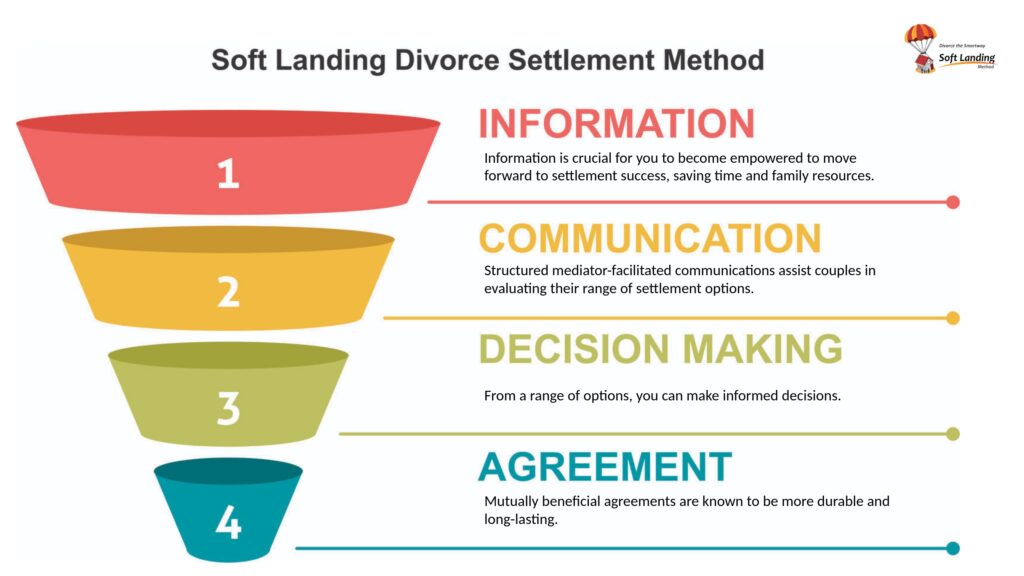Going Beyond Canada Divorce Act: Empower Your Journey

Canada Divorce Act changes of March 1, 2021
Canada Divorce Act changes of 1985
Summary of the Divorce Acts
- Legal professionals, including lawyers, mediators, and financial advisors, benefit from using DivorceMate for accurate calculations and documentation. The public can use MySupportCalculator to understand their financial obligations and rights during a divorce.
No, DivorceMate does not offer a free version and is intended for professional use only. Public users can use MySupportCalculator, which offers accessible financial tools online.
Yes, separation is a physical and emotional break from your spouse, while divorce is the legal end of the marriage.
Property is divided equitably, considering factors like the value of family assets and contributions to the marriage.
Spousal support is determined based on factors like the length of the marriage, roles during the marriage, and each spouse’s financial situation.
The Act addresses property division, spousal support, and child support, ensuring fair financial settlements based on applicable guidelines and the couple’s circumstances.
In the Canada Divorce Act mediation is strongly encouraged as a method to resolve disputes amicably. Mediation can help couples come to agreements on issues like property division, spousal support, and child custody without the need for prolonged court battles. Engaging in mediation early with a Divorce Mediator or Certified Divorce Financial Analyst can lead to a smoother and more cooperative divorce process, potentially saving time and reducing conflict.
The Act prioritizes the best interests of the child, considering factors like the child’s needs, relationships, and stability when determining custody and access.
Adultery refers to voluntary sexual intercourse between a married person and someone other than their spouse.
Grounds for divorce include one year of separation, adultery, or cruelty.
The Divorce Act ensures a standardized legal process for divorce, protecting the rights and interests of spouses and children, and promoting fair settlements.
Any married person who meets the residency requirement can file for divorce under the Divorce Act.
You can file for divorce after meeting the residency requirement of living in a Canadian province for at least one year and after the necessary separation period.
No, you do not need a lawyer to file for divorce. However, working with a Divorce Mediator or Certified Divorce Financial Analyst can help you navigate the process more smoothly and ensure a fair settlement.
To file for divorce, you must complete a divorce application, serve the application to your spouse, and file the documents with the court. The court will review the application and, if approved, issue a divorce order.
The Divorce Act governs the process of divorce in Canada, ensuring fair property division, spousal support, and child custody arrangements. It provides a legal framework for ending a marriage and helps protect the rights of both parties and their children.
De facto means ‘in fact’ and often refers to relationships that are treated like marriage but aren’t legally recognized. Consult a mediator or financial analyst before taking legal action.
The Divorce Act is federal, while the Family Law Act is provincial. The Divorce Act deals with divorce, whereas the Family Law Act covers a broader range of family issues. Consult a mediator or financial analyst first.
The history of divorce in Canada dates back to 1968 with the enactment of the Divorce Act. Before retaining a lawyer, consider seeking advice from a divorce mediator or a certified divorce financial analyst.
The new Divorce Act Canada 2021 focuses on the best interests of the child and introduces changes in relocation cases. Before hiring a lawyer, consider consulting a divorce mediator or a certified divorce financial analyst.
Divorce was legalized in Canada in 1968 with the enactment of the Divorce Act. Before retaining a lawyer, consider seeking settlement assistance from a divorce mediator or a certified divorce financial analyst.
This may interest you:
- Divorce Act ( RSC , 1985, c. 3 (2nd Supp.)) – Laws.justice.gc.ca: This is the official government page for the Divorce Act, providing the full text of the law. It’s a reliable source for anyone wanting to understand the specifics of the Act.
- RSC 1985, c 3 (2nd Supp) | Divorce Act | CanLII: CanLII is a non-profit organization managed by the Federation of Law Societies of Canada. CanLII’s goal is to make Canadian law accessible for free on the Internet. This website provides access to court judgments, tribunal decisions, statutes and regulations from all Canadian jurisdictions.
- Divorce Law in Canada (96-3e): This link provides a historical perspective on the Divorce Act of 1968, which introduced the concept of permanent marriage breakdown as a ground for divorce.
- Divorce Act (Canada) – Wikipedia: Wikipedia provides a comprehensive overview of the Divorce Act, including its history, provisions, and impact. It’s a good starting point for general information.
- For years, Canada’s Divorce Act didn’t mention family violence. That changes today. – CBC: This CBC article discusses the recent changes to the Divorce Act regarding family violence. It’s a good resource for understanding the Act’s evolving approach to this important issue.
- Divorce Law Basics – Canadian Legal FAQs: This page provides a basic overview of divorce law in Canada, including the role of the Divorce Act. It’s a good resource for anyone needing a simple, straightforward explanation.
- Government of Canada announces coming into force of Divorce Act amendments: This is the official announcement from the Government of Canada about the coming into force of Divorce Act amendments. It’s a primary source for information about the changes.
- Canada: Summary Of The Changes To The Divorce Act | Mondaq: This article provides a summary of the changes to the Divorce Act, including a broad definition of family violence. It’s a good resource for understanding the key changes in the law.
Ken Maynard CDFA, Acc.FM
I assist intelligent and successful couples in crafting rapid, custom separation agreements that pave the way for a smooth transition towards a secure future. This efficient process is achieved in about four meetings, effectively sidestepping the excessive conflicts, confusion, and costs commonly linked to legal proceedings. Clients have the flexibility to collaborate with me either via video conference or in-person through a DTSW associate at any of our six Greater Toronto mediation centers, located in Aurora, Barrie, North York, Vaughan, Mississauga, and Scarborough.
Have a few questions - Tap here to Schedule a Get Acquainted Call


















































